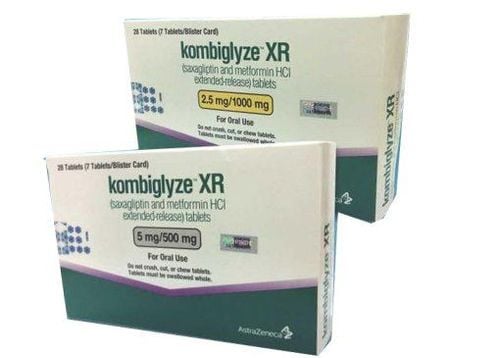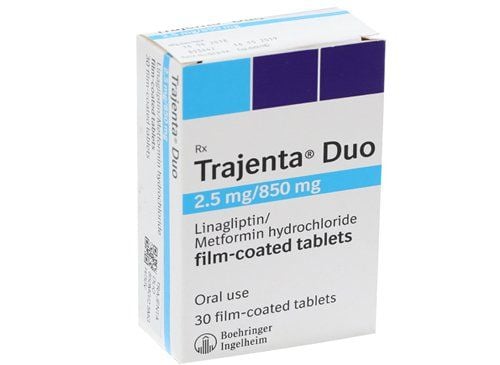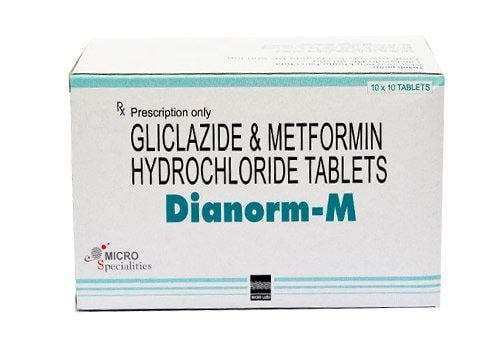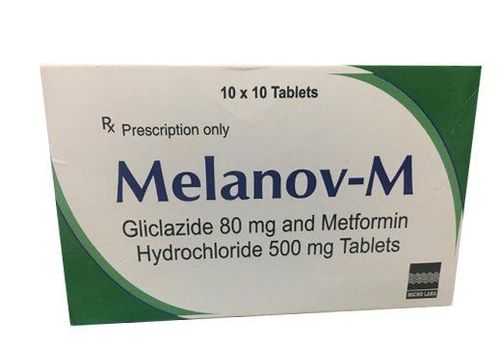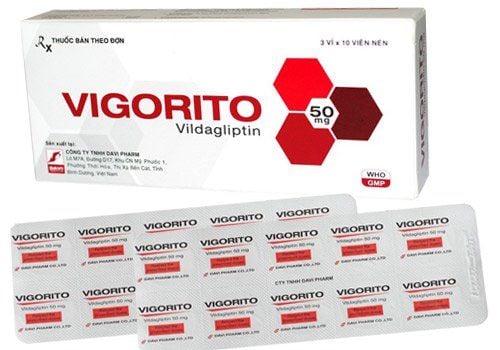This is an automatically translated article.
Sitagibes is used in the treatment of type 2 diabetes, with the main ingredient being Sitagliptin. Let's learn more about the Sitagibes drug line through the article below.1. What is Sitagibes?
Sitagibes is made in the form of film-coated tablets packed in boxes of 4 blisters x 7 tablets. The drug has 2 forms, Sitagibes 50 and Sitagibes 100.
Sitagibes 50 includes:
Sitagliptin content 50mg (In the form of Sitagliptin phosphatmonohydrate 64.25mg) Excipients: Anhydrous Dicalcium phosphate, Magnesium stearate, Microcrystallin cellulose 112, Povidon K30 , Croscarmellose sodium, Titanium dioxide, Hydroxypropyl methylcellulose 606, Talc, Yellow iron oxide, Polyethylene glycol 6000, Polysorbate 80 vnd 1 tablet. Sitagibes 100 includes:
Sitagliptin 100mg (As Sitagliptin phosphatmonohydrate 128.5mg) Excipients: Dicalcium phosphate anhydrous, Magnesium stearate, Microcrystallin cellulose 112, Povidon K30, Croscarmellose sodium, Titanium dioxide, Hydroxypropyl methylcellulose 606, Talc , Yellow Iron Oxide, Polyethylene glycol 6000, Polysorbate 80 vnd 1 tablet.
2. Uses of the drug Sitagibes
Sitagibes is used as monotherapy to control blood glucose in patients with type 2 diabetes (non-insulin dependent) along with diet and exercise. Sitagibes is used in combination with other oral antidiabetic agents for the control of type 2 diabetes in patients with uncontrolled blood glucose levels on oral antidiabetic monotherapy. Sitagibes is also used in combination with pioglitazone and metformin when this combination fails to control blood glucose. Sitagibes is also used in combination with insulin with or without metformin when insulin fails to control blood glucose.3. Dosage of Sitagibes
The drug Sitagibes is used orally.
Dosage of Sitagibes drug depends on each subject and each person's medical condition. Dosage of Sitagibes refer to the following:
Patients who have not been treated before:
Monotherapy: Adults take 100mg of Sitagliptin, once a day. Combination therapy with metformin hydrochloride: 100mg Sitagliptin orally, once a day. Persons switching to a regimen of Sitagibes in combination with another antidiabetic agent:
Combination therapy of Sitagibes with metformin hydrochloride: orally 100mg of Sitagliptin, once a day. The current dose of metformin hydrochloride can be maintained when initiating combination therapy with sitagliptin. Combination therapy of Sitagibes with a sulfonylurea: 100 mg of Sitagliptin once daily. To minimize the risk of hypoglycemia, it may be necessary to reduce the dose of the sulfonylurea. Combination therapy of Sitagibes with metformin hydrochloride and a sulfonylurea: 100 mg orally of sitagliptin once daily. To minimize the risk of hypoglycemia, it may be necessary to reduce the dose of the sulfonylurea. Combination therapy of Sitagibes with thiazolidindion: 100mg of sitagliptin once daily. The current dose of thiazolidindion can be maintained at the start of combination therapy with sitagliptin. Combination therapy regimen between Sitagliptin and Metformin hydrochloride:
It is necessary to adjust the dose of Sitagliptin according to each patient based on the current treatment regimen, clinical response and tolerability. Extreme caution should be exercised when changing regimens with sitagliptin, as changes in glycemic control may occur.
In people who cannot control blood glucose when using Sitagibes monotherapy: The initial dose is a fixed combination of 500mg Metformin hydrochloride with 50mg Sitagliptin, taken orally twice a day. If necessary, increase the dose of Metformin by using a fixed combination of 1g Metformin hydrochloride with 50mg Sitagliptin, orally twice daily.
In people who cannot control blood glucose when using Metformin monotherapy: Depending on the dose of Metformin being used, the option of starting with a fixed combination of 500mg Metformin hydrochloride and 50mg Sitagliptin or 1g Metformin hydrochloride and 50mg Sitagliptin, orally 2 times/day.
In people who cannot control blood glucose when using Metformin 850mg, used twice a day: Use a fixed combination of 1g Metformin hydrochloride and 50mg Sitagliptin, orally 2 times a day.
In humans, blood glucose cannot be controlled when a combination regimen of 2 drugs Sitagliptin and a Sulfonylurea, Sitagliptin and Metformin hydrochloride, or Metformin hydrochloride and a Sulfonylurea: Use a fixed combination of 50mg Sitagliptin, orally twice a day.
Maximum dose:
Sitagibes monotherapy: Maximum dose of 100mg Sitagliptin/day. Fixed combination of Sitagi Baby with Metformin hydrochloride: Maximum dose of 100mg Sitagliptin and Metformin hydrochloride 2g/day. Special populations:
Patients with hepatic impairment: No dose adjustment of Sitagliptin is required for patients with mild to moderate hepatic impairment. The safety and efficacy of Sitagliptin in patients with severe hepatic impairment have not been established.
Renal impairment: Dosage adjustment and caution should be used in patients with moderate to severe renal impairment, end-stage renal failure requiring hemodialysis or peritoneal dialysis.
Patients with moderate renal impairment: The recommended dose is 50mg Sitagliptin, once a day.
In patients with severe renal impairment: The recommended dose is 25mg of sitagliptin once daily.
Patients with end-stage renal failure requiring hemodialysis or peritoneal dialysis: The recommended dose is 25mg of Sitagliptin, once a day. Sitagibes can be used regardless of the hemodialysis time.
Treatment with fixed combination Sitagliptin and Metformin hydrochloride: It is necessary to adjust the dose of Sitagliptin in patients with renal failure, it is not recommended to switch to the fixed combination treatment regimen of Sitagliptin and Metformin hydrochloride. In the case of drug use in the elderly, caution should be exercised when choosing the dose of Sitagliptin because renal function may decrease.
4. How to take Sitagibes
Sitagibes monotherapy:
Take Sitagibes once a day, with or without meals. If you forget to take your Sitagibes, you need to take it as soon as you remember, as soon as possible, and resume your regular Sitagibes schedule. If the missed dose is close to the time for the next dose, skip the missed dose and take the medicine according to the current dosing schedule. Do not make up for a missed dose of Sitagibes by doubling the dose. Combination therapy with Sitagibes:
When using the fixed combination therapy of Sitagliptin and Metformin hydrochloride, administer the drug twice a day with meals, increasing the dose slowly to minimize the gastrointestinal ADR of metformin hydrochloride. If you forget a combination pill, you need to take it with a meal as soon as you remember, as soon as possible and restart the dosing schedule. If the missed dose is close to the time for the next dose, skip the missed dose and take the medicine according to the current dosing schedule. Do not make up for a missed dose of Sitagibes by doubling the dose.
5. Contraindications to the use of Sitagibes
Sitagibes drug is not used in the following cases:
Patients with hypersensitivity or history of allergy to sitagliptin and any of its ingredients. Type 1 diabetes (insulin dependent). Diabetic ketoacidosis.
6. Notes when using the drug Sitagibes
People with acute pancreatitis should be cautious and closely monitor the use of Sitagibes. If during the course of taking the medicine, you have symptoms of pancreatitis such as nausea/vomiting, loss of appetite, loss of appetite, severe abdominal pain that persists, contact your doctor immediately.
Use of Sitagibes in patients with renal failure: It is necessary to closely evaluate renal function before and periodically during treatment with Sitagliptin. In some patients, renal function decline, acute renal failure and hemodialysis were required. Therefore, it should be used with caution in patients with moderate to severe renal impairment; in patients with end-stage renal disease requiring hemodialysis or peritoneal dialysis, the dose of Sitagliptin should be adjusted if necessary.
During times of stress, including fever, infection, and surgery, it is possible to lose control of blood glucose, discontinue sitagliptin and administer insulin to control it. Reintroduce Sitagibes therapy when the episode of acute hyperglycemia has passed.
Rare hypersensitivity reactions include: anaphylaxis, severe allergic skin reactions such as Stevens-Johnson syndrome, angioedema. This condition usually occurs within 3 months of initiation of treatment with Sitagibes but can occur as early as the first dose of Sitagibes. If the patient develops symptoms or hypersensitivity reactions while taking the drug, Sitagibes must be discontinued immediately.
Caution should be exercised when co-administering sitagliptin with sulfonylureas, as the risk of hypoglycaemia may be increased. Monitor blood glucose closely, adjust the dose of sulfonylureas as needed.
The safety and efficacy of Sitagibes in children under 18 years of age have not been established.
Sitagibes should be stored at a temperature below 30°C, protected from moisture and light.
During pregnancy, the use of Sitagliptin is not recommended.
During lactation, sitagliptin should not be used unless the benefits and risks have been carefully weighed because there are no data on whether sitagliptin is excreted in human milk.
7. Side effects when using the treatment Sitagibes
During the use of Sitagibes, patients may experience some unwanted side effects such as:
Digestive: Diarrhea, abdominal pain, nausea, dry mouth and pain with loss of appetite. Respiratory: Rhinitis, pharyngitis, pharyngitis, upper respiratory tract infections Peripheral edema Drowsiness, headache, dizziness Hypoglycemia Chronic osteoarthritis Pancreatitis Increased liver enzymes, increased serum creatinine Leukocytosis Hypersensitivity reactions include anaphylaxis Angioedema Stevens-Johnson syndrome, rash, exfoliative dermatitis, urticaria. If acute pancreatitis is suspected during administration, sitagliptin should be discontinued and tests for amylase/creatinine clearance, serum and urine amylase, electrolytes, serum calcium, glucose, and lipase should be performed. timely supportive treatment.
8. Sitagibes drug interactions with other drugs
The following are some of the reported Sitagibes drug interactions:
Avoid taking Sitagibes with alcohol, MAO inhibitors, anabolic steroids, testosterone because it may increase the hypoglycaemic effect of sitagliptin. Concomitant administration of Sitagibes with sitagliptin increases digoxin plasma concentrations of digoxin. Loop diuretics and thiazides, corticosteroids, oral contraceptives, when combined with Sitagibes can antagonize the hypoglycaemic effect of antidiabetic agents. CYP3A4 and 2C8 inhibitors or inducers coadministered with Sitagibes did not affect the metabolism of sitagliptin. The above are the uses of Sitagibes, patients need to carefully read the instructions and use the drug according to the indications to get the best treatment results.




